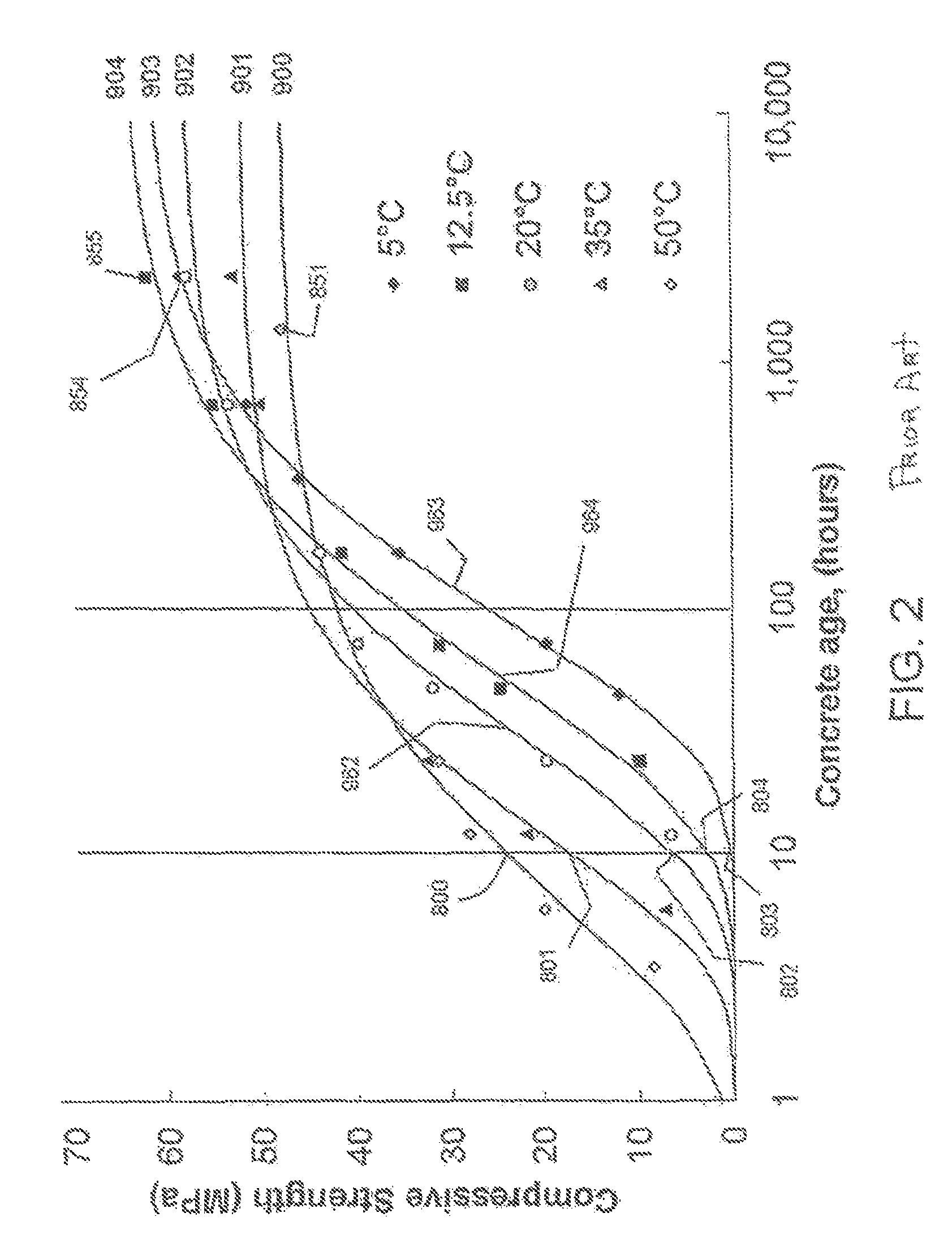Method and apparatus of curing concrete structures
a concrete and structure technology, applied in the field of methods and equipment, to achieve the effect of reducing curing cycles, supplying the necessary strength and rigidity to the structure, and efficiently transferring
- Summary
- Abstract
- Description
- Claims
- Application Information
AI Technical Summary
Benefits of technology
Problems solved by technology
Method used
Image
Examples
Embodiment Construction
[0055]The above general description and the following detailed description are merely illustrative of the subject invention and additional modes, advantages and particulars of this invention will be readily suggested to those skilled in the art without departing from the spirit and scope of the invention. The invention generally provides a means for heating concrete structures employing electrically conductive resistive heating components comprising carbon (also described herein as “fiber circuits”, “heating components” or “heating members”) embedded within the concrete structure to provide impedance or resistive heat from an AC or DC current source (hereinafter “resistive heating”) and remaining permanently intact as structural reinforcement. The heating component can be electrically energized and may include one or more electrically conductive contact members or connections (also termed “contact members”) for connection to an electrical power source. The invention also pertains to...
PUM
| Property | Measurement | Unit |
|---|---|---|
| temperature | aaaaa | aaaaa |
| temperature | aaaaa | aaaaa |
| tensile strength | aaaaa | aaaaa |
Abstract
Description
Claims
Application Information
 Login to View More
Login to View More - R&D
- Intellectual Property
- Life Sciences
- Materials
- Tech Scout
- Unparalleled Data Quality
- Higher Quality Content
- 60% Fewer Hallucinations
Browse by: Latest US Patents, China's latest patents, Technical Efficacy Thesaurus, Application Domain, Technology Topic, Popular Technical Reports.
© 2025 PatSnap. All rights reserved.Legal|Privacy policy|Modern Slavery Act Transparency Statement|Sitemap|About US| Contact US: help@patsnap.com



